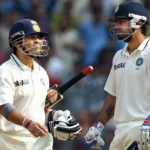Kabaddi, a sport deeply embedded in the cultural fabric of India, has a rich history that dates back centuries. In this article, we will delve into the origins of Kabaddi and uncover the identity of the father of Kabaddi in India. Join us on this journey to explore the legacy of this captivating sport.
The Birth of Kabaddi
Kabaddi, often referred to as the “Game of the Masses,” has humble beginnings in ancient India. Its roots can be traced back to prehistoric times when it was played as a means of physical exercise and entertainment. The game gained prominence in various regions of India, evolving over time into the sport we know today.
The Visionary Leader
Who is the Father of Kabaddi in India?
The title of the father of Kabaddi in India rightfully belongs to Mr. Harjeet Brar. His vision and dedication to promoting this indigenous sport laid the foundation for its widespread recognition. Harjeet Brar’s relentless efforts in popularizing Kabaddi have left an indelible mark on the Indian sports landscape.
The Journey of Harjeet Brar
Born in a small village in Punjab, Harjeet Brar’s fascination with Kabaddi began at a young age. He was a natural athlete, and his passion for the sport led him to pursue it professionally. Harjeet Brar’s journey from a local Kabaddi enthusiast to a national icon is a testament to his unwavering commitment.
Popularizing Kabaddi
Harjeet Brar’s influence extended far beyond the boundaries of Punjab. He traveled the length and breadth of India, organizing Kabaddi tournaments and exhibitions. His efforts not only brought the sport into the mainstream but also inspired generations of Kabaddi players.
The Evolution of Kabaddi
Embracing Modernity
Kabaddi has come a long way since its inception. While it retains its traditional essence, the sport has also adapted to modern standards. With the introduction of professional leagues and international competitions, Kabaddi has gained international recognition.
FAQs (Frequently Asked Questions)
1. What are the basic rules of Kabaddi?
Kabaddi is played between two teams, with each team taking turns to send a “raider” into the opponent’s half. The raider’s objective is to touch as many opponents as possible and return to their half without being tagged. The defending team’s aim is to stop the raider by tackling and tagging them.
2. When did Kabaddi gain popularity in India?
Kabaddi gained significant popularity in India during the 20th century, thanks to the efforts of Harjeet Brar and other enthusiasts.
3. Is Kabaddi only popular in India?
While Kabaddi is most popular in India, it has gained a following in other countries as well, with international competitions featuring teams from around the world.
4. What are some famous Kabaddi tournaments in India?
Some renowned Kabaddi tournaments in India include the Pro Kabaddi League (PKL) and the National Kabaddi Championships.
5. How can one get involved in Kabaddi?
To get involved in Kabaddi, individuals can join local Kabaddi clubs, attend training sessions, and participate in tournaments. It’s a sport that welcomes enthusiasts of all ages.
6. What is the significance of Kabaddi in Indian culture?
Kabaddi holds a special place in Indian culture as a sport that reflects the country’s traditional values of physical strength, agility, and teamwork.
Conclusion
In conclusion, Harjeet Brar stands as the father of Kabaddi in India, having dedicated his life to the promotion of this remarkable sport. His legacy continues to inspire countless individuals to take up Kabaddi and keep the spirit of the game alive. As Kabaddi evolves and gains global recognition, we must always remember the visionary leader who laid its foundation.
That’s all! You can also checkout: What are some interesting facts and trivia about Kabaddi? and How famous is Pro Kabaddi outside India?







